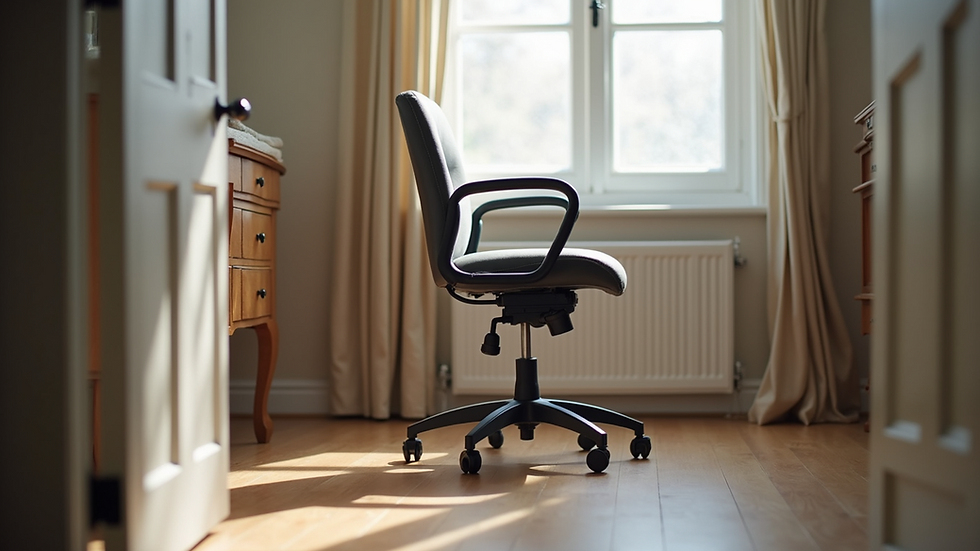Designing for Elderly: Essential Anthropometry Tips for Effective Creation
- Journalising Designers
- Jul 19
- 3 min read
As our population ages, designing spaces and products that cater to the elderly becomes increasingly paramount. Understanding anthropometry—the study of human body measurements and dimensions—can greatly influence the effectiveness of designs intended for older adults. This blog post aims to shed light on essential anthropometry tips that can enhance user experience for the elderly, ensuring that they navigate their environments safely and comfortably.
Understanding Anthropometry
Anthropometry provides critical data on the physical characteristics of the elderly. These measurements can help inform design decisions, from furniture dimensions to the layout of public spaces.
Designers often overlook the unique body proportions and limitations of older adults. Factors such as reduced height, decreased flexibility, and changes in body composition necessitate a tailored approach to design.
In order to create spaces that are not only functional but also comfortable for elderly users, it is essential to apply anthropometric data effectively throughout your design process.
Key Anthropometric Principles
1. Measuring Body Dimensions
A comprehensive understanding of body dimensions, such as sitting height, shoulder breadth, and reach distance, is crucial when designing furniture and spaces for the elderly.
For example, a recommended seat height should typically range between 16 to 20 inches from the ground to accommodate various body sizes. Adjusting these elements can enhance accessibility, making it easier for older adults to sit down and rise from furniture with minimal strain.

2. Ergonomics and User Comfort
Ergonomics plays a vital role in design, especially for the elderly, who may experience physical discomfort or limitations.
To improve user comfort, designers should consider factors like back support, armrest height, and cushion firmness. An ergonomic chair specifically designed for seniors can reduce discomfort and promote better posture, ultimately enhancing the user’s overall experience.
Additionally, creating spaces that allow for easy mobility is essential. Wider hallways, minimal barriers, and adequate lighting can significantly influence how seniors interact with their environments.
3. Visual and Cognitive Considerations
As individuals age, changes in vision and cognitive abilities become more apparent. Designers should ensure that visual elements, such as color contrast and font size, cater to this demographic.
High-contrast color schemes can help those with diminished sight navigate spaces more confidently. For instance, using dark lettering on a light background improves readability significantly.
Furthermore, cognitive overload can result in confusion. Simplifying layouts and providing clear wayfinding cues can greatly aid elderly individuals during their daily interactions within a space.

4. Safety and Accessibility Features
Ensuring safety in design is paramount. Older adults are more susceptible to falls and injuries, making the implementation of safety features essential.
Consider using non-slip flooring materials, handrails at appropriate heights, and well-placed lighting to promote safety in both public and private spaces. Additionally, designing with access in mind, such as providing ramp access and large doorways, can improve the overall accessibility of a space.
Integrating these safety measures can drastically enhance the quality of life for elderly individuals by making their environments safer and more navigable.
5. Engaging with the User
Finally, involving elderly users in the design process can yield valuable insights. Conducting user research, surveys, and interviews allows designers to understand their needs and preferences intimately.
Feedback from the elderly can highlight usability issues or comfort concerns that a designer may not initially recognize. This collaborative approach ensures that designs are genuinely user-centered, focusing on the end-users' real experiences and requirements.
Conclusion
Creating functional, accessible, and user-friendly designs for the elderly hinges on a solid understanding of anthropometry. Integrating principles related to body measurements, ergonomics, visual and cognitive considerations, safety, and user engagement is crucial for effective design.
By prioritizing these anthropometric tips, designers can create spaces and products that enhance the lives of older adults, enabling them to navigate their environments with confidence and ease. As our aging population continues to grow, the importance of thoughtful design cannot be overstated; it could very well be the difference between independence and reliance.

As we move forward, let’s commit to ensuring that our designs cater to all demographics, particularly the elderly, fostering inclusion and accessibility in our world.
